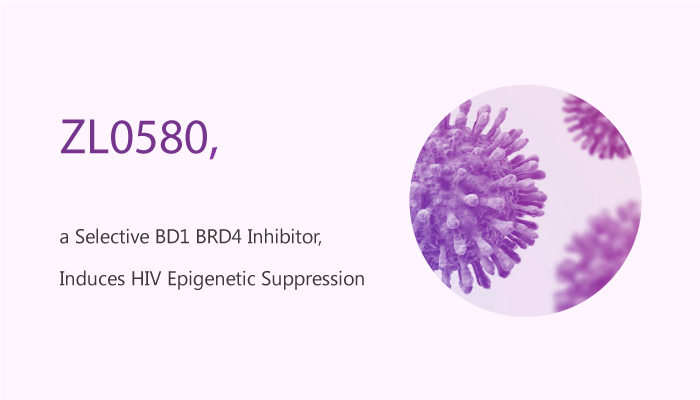HIV integrates its provirus into the host genome and establishes latent infection. Antiretroviral therapy (ART) can effectively suppress active HIV replication. But, it cannot eradicate or cure the virus. Host cell epigenetic and transcriptional mechanisms can regulate HIV gene expression. For instance, small antisense RNAs targets to the HIV promoter. It induces HIV transcriptional suppression and/or silencing. Despite substantial efforts to understand mechanisms for epigenetic regulation of HIV, there are also limited effective small molecules and targeting host epigenetic factors to silence HIV. The bromodomain and extra terminal (BET) family proteins, including BRD4, are a group of epigenetic factors. They bind acetylated histones in chromatin. BRD4 is functionally versatile and interacts with a variety of partnering proteins to regulate gene expression. In this study, it identifies a small molecule (ZL0580) that induces epigenetic suppression of HIV via BRD4.

ZL0580, a structurally close analog of ZL0590, induces epigenetic suppression of HIV via selectively binding to the BD1 domain of BRD4.
ZL0580 induces HIV suppression by inhibiting Tat transactivation and transcription elongation. Meanwhile, it suppresses positive control (PMA)-induced HIV activation in a dose-dependent manner. ZL0580 induces HIV transcriptional suppression. Single ZL0580 (10 μM) suppresses both PMA-stimulated and basal HIV transcription through day 14 after treatment. ZL0580 suppresses HIV in vitro HIV-infected human CD4+ T cells. ZL0580 suppresses HIV transcription ex vivo in PBMCs of viremic HIV-infected participants. It also inhibits Tat transactivation and key factors in HIV transcription elongation. ZL0580 induces chromatin remodeling and causes a more repressive nucleosomal structure in the HIV LTR.
In summary, ZL0580 selectively binds to BRD4 and induces epigenetic suppression of HIV. ZL0580 can suppress both induced and basal HIV transcription. Meanwhile, ZL0580 induces HIV suppression by inhibiting Tat-mediated transcription elongation and inducing a repressive chromatin structure at the HIV promoter.
Reference:
Niu Q, et al. J Clin Invest. 2019 Jul 22;129(8):3361-3373.